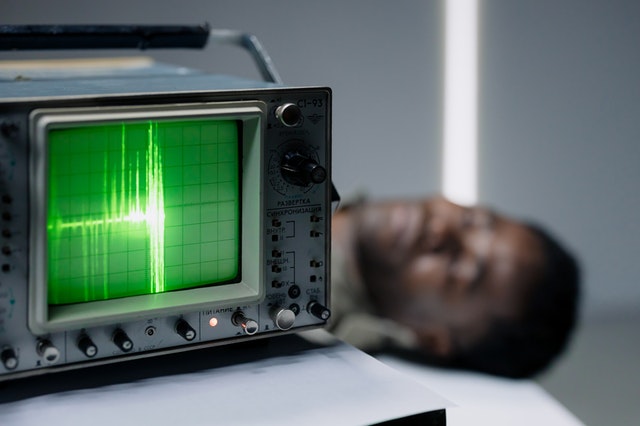Producing proper documentation is one of the most important tasks of all health care professionals. So what is charting? Documentation, often known as charting, is a way of keeping note of everything that happens to each patient in a clear and precise manner. It’s part of the CNA job description, and it’s a way for the team to communicate about the patient so they can prepare for and give the best care possible.
What is harting?
Nurse charting creates a documented medical record of services provided to a patient, including procedures performed, medications given, diagnostic test results, and interactions between the patient and healthcare professionals. Nurses have a huge responsibility to fill patient charts correctly, which is critical for avoiding medical mistakes, providing high-quality treatment, and safeguarding medical personnel from liability and malpractice claims.
Other important functions of documentation include:
- It keeps a permanent record of a patient’s medical treatment.
- It is used to charge the insurance company as proof of care and services.
- It may be used in court of law as proof.
Because you probably spend more time with patients as a CNA than any other professional, charting is essential. Patient charting seems to be challenging but it is actually not difficult. You must make patient charting correctly.

What do CNAs document? Plenty!
- Consciousness or awareness level
- Vital sign measurements
- Weight and height
- Intake and output
- Getting rid of bowels
- Appetite and food consumption
- Color, condition, and integrity of the skin
- Ambulation, range of motion, turning and positioning, catheter care, unsterile bandage changes, hot or cold compresses, bathing, and other activities and care are among the activities and care available.
- Response of the patient to activities and care
- The patient’s significant statements
- Conversations you have with other healthcare team
>>> Read more: All You Need To Know About Checking The Apical Pulse
Eleven documentation golden rules
There are Eleven Documentation Golden Rules. They apply to anybody who enters information into a patient’s medical record. Let’s go through them again:
1. It didn’t occur unless you wrote it down
You may have heard this “if you didn’t write it down, it didn’t happen”. This is one of the most important statements in health care. Failure to properly document care can result in two potentially dangerous outcomes. To begin with, there will be no evidence that a treatment or medicine was administered. Second, the therapy or medicine may be administered twice as a result. Either consequence might be considered as malpractice. As a result, if you’re going to do it, chart it!
2. Signed, dated, and timed entries are required
This information will be automatically input and unalterable if your facility utilizes electronic health records. You will write this information for each entry if your facility uses paper charts.
3. After you’ve given it, chart it as quickly as possible.
(Ideally, you should chart it right away, but this isn’t always possible.) Why do you have to be so prompt? Because once it’s on the chart, no one will question whether the care was given and if it should be delivered again. Patients do not always inform others that their dressing has been changed or that they have just returned from a walk. Never offer care without first charting it. This is not only illegal, but it also counts as a false entry if you fail to offer the care or whatever else happens.
4. Every time, write legibly
Written documentation will become less prevalent as electronic health records become more common. However, the patient’s chart is likely to contain paper forms or other written items at all times. It won’t help you if your letter can’t be read.
5. Be methodical
Always use the same charting method. You may, for example, decide to always use the head-to-toe method. You’ll start by assessing the patient’s level of consciousness and vital signs. After that, you’ll chart your observations, care provided, and activities. If you constantly chart in the same way, you’ll be less likely to miss something.
6. Be accurate
Always double-check your work before signing it. Have you thought of everything? Is it spelled correctly? Is this the correct patient’s chart entry? Use quotation marks to include a patient’s statement, and record it verbatim. Here are two examples:
The patient said, “This is the worst pain I’ve ever felt.”
“I’m really depressed,” the patient said. “I’d like to return home.”
7. You must be objective at all times
Do not keep a record of your thoughts. Use exact terminology and give detailed descriptions of what you’ve observed. You can, for example, note that the patient’s wound is red, warm, and filled with white secretions. Because that would be outside the scope of CNA practice, you won’t be able to document that the wound is infected. For example, it’s OK to note that a patient is in extreme pain or that his or her pain level is a 9 out of 10, but not that the patient has a low pain threshold or that he or she is childish.
8. Include any important information you give the nurse in your entry
Imagine the following scenario: the skin above a patient’s sacrum is red and warm to the touch. Of course, you’ll inform the nurse immediately. Make a note of it on the chart as well. Make a note of everything you say to other team members regarding the patient. When the doctor arrives, you could be at the patient’s bedside. You might inform the doctor that the patient has been in pain all night.
9. Only use abbreviations that have been approved by your facility
Every facility has an approved list of abbreviations, which is generally available in the policy manual. There may also be a list of abbreviations that should not be used. Even if you used other abbreviations at another job, you must adhere to the rules. Make a duplicate of the list and keep it with you if required.
10. Never change what you have charted
Never. An entry must be permanent once it is made. Changes are not permitted in electronic health records, but they are also not permitted on paper charts. If you make a mistake, correct it according to your facility’s rules. Many facilities will accept a single line with the date, time, and initials if you make a mistake. Erasing, blacking out, or using correction fluid are all not allowed.
11. Don’t chart for others or allow others to chart for you
You may be tempted to help when things are busy or others are far behind, even if nothing new has happened to the patients. However, this must not be done. It’s against the rules and unethical. Period.
The patient’s medical record is the only source where the patient’s information is legally stored. It is not difficult to document, but it must be done correctly. Your charting is just as essential as everyone else’s on the team. During each shift, your observations serve as a baseline for each patient’s status and can help you detect changes in the patient’s health. Take pride in your charting since your patients are relying on you.
Read more >> 25 CNA Skills You Need To Know
Tips and tricks to nailing patient harting
With the following five helpful nurse charting tips, you can ensure that your patient record is as accurate, relevant, and finished on time as possible.
- Find a balance
“If it wasn’t charted, it wasn’t done,” explains Catherine Burger, RN, BS, MSOL, NEA-BC, “nurses are trained to live by the credo “If it wasn’t charted, it wasn’t done.” “However, nurses must find a balance between the need to document care delivered and actual face-to-face contact with patients. Nurses who can integrate technology at the bedside will discover an efficient flow to documentation and patient contact in the age of the electronic medical record (EMR).”
- Utilize the most of technology
When it comes to completing their nursing charts, Burger highlights the significance of nurses learning to use the EMR to their advantage.”Many EMRs are set up to display physiological systems in a certain order, with the default being ‘Within Normal Limits”. If the nurse’s evaluation of the patient is normal except for the patient’s lung sounds, she should note the abnormal lung sounds and simply ‘validate’ that the rest of the exam is within normal limits.”
- Double-documentation should be avoided
Some experienced nurses, according to Burger, have a hard time giving up the “play-by-play narrative note.” “With the design and functionality of the EMR, the majority of information is included in flowsheets and data sets,” she explains. Nurses should avoid double-documenting in a narrative and on flowsheets to save time. Nurses should only utilize a narrative note when they need to tell the story of a patient event or when the care team has access to a shift summary link.”
- Real-time documentation
“Rather than batching their documentation, nurses should aim to document in real-time,” Burger advises. “Batch-charting takes longer than recording care at the time of service, according to studies. Another compelling reason to document in real-time is that many EMRs now include prediction models in their programming that alert the nurse or rapid response team when a patient is declining or is expected to decrease.”
- Pre-charting is not recommended
According to the Denver College of Nursing, the busier you are, the more difficult it is to maintain your nursing charts up to date, which is when errors and omissions are more likely to occur. This is also the most important time to keep accurate records of your actions. However, never chart in advance. To prevent potentially serious consequences, wait until tasks are done.
Conclusion
Some nurses have a strong desire to help people in their communities. Others are attracted by medicine and patient care in general. Some people are drawn to nursing by chance, while others have known it to be their lifelong ambition. Although charting may not be one of them, there are numerous reasons and events that might drive you to the fascinating area of nursing.
Documentation (charting) is an important (though sometimes aggravating) aspect of the work. However, improving your charting skills may make a big impact in the care you give your patients and the quality of your job.
Read more >> 10 Good Qualities of a Nurse You Should Know
Whether you are an experienced nurse or a fresh graduate, documentation seems to be challenging. While charting and documenting for the first time may seem overwhelming, you don’t need to be concerned as long as you learn the essentials and keep a positive mindset.
And the above eleven documentation golden rules, as well as five tips, can be put into practice in many nursing homes, hospitals, and clinics to decrease the tedium of nurse charting while keeping your patients — and your work — safe. By the way, visit our website if you are looking for sample charting.
Visit our websites to get more information about CNA and free CNA practice exam or download it for your IOS or Android device.

Top Registered Nurse Interview Tips
Remember some important registered nurse interview tips in our post is an excellent way to ensure that you are well-prepared for the interview.
January 1, 2022

Everything That You Should Know About The CNA Online Test
Lots of students have wondered about the CNA online test as well as what should be remembered when taking it. Let’s get started!
January 1, 2022

All You Need To Know About Checking The Apical Pulse
What is the apical pulse which is the method to check it? Here we will help you with the following beneficial information. Let’s get started!
January 1, 2022

